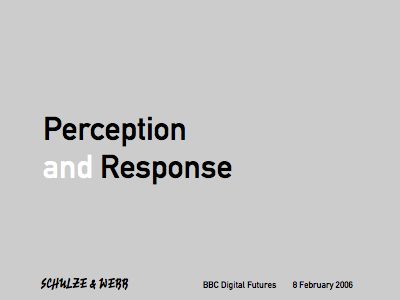
The pressure in both perception and response is for speed. Anything that makes it slightly quicker to figure out how the world works – reliably – is good. Ditto responding quickly.
When you’re seeing something, it’s often about how to deduce stuff we need to know that we can’t see directly. Shape I’ve mentioned already. What an object is, and how it goes together, is another.
Why do I see my hand as a hand, and not as disconnected fingers? It’s important to know it’s a single object, because I can do motion tracking, and ignore the possibility that it might split into component bits. How do we know that this particular pattern of light is going to hang together?
Now I said that perception is a process, and this is something that happens about half-way through. Your eyes get the light and do some compensating for light level and the movement of your pupils.
The visual cortex, right at the back, here, contains lots of maps that respond to particular features in the visual field: Colours, lines of different angels, and so on. Then two things happen in parallel. There’s a stream of information that looks for movement.
The bit we’re interested in runs round the side of the head to a bit called “LOC”. This is the bit that identifies what we’re looking at. The LOC matches up lines and features and goes: Hey, that’s an object, that’s one thing there. Then those objects are sent on to the forebrain to be recognised as hands or dogs or faces or whatever.
Ah now, the LOC. I’ve heard about a person with a broken LOC who can tell the difference between a knife and fork by feel, but not by looking. They just see the patterns of light.
There’s some evidence… I don’t want to overstate anything, okay, there’s a little evidence that the LOC encodes certain object completion rules that we already know how to tap into.